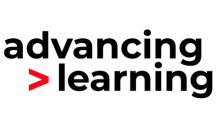Investigations and practicals are always popular with students and are essential to skill our future scientists. Unfortunately, they can be time consuming and expensive, the two things teachers are always short of. I would like to share my top tips for practical’s in science.
When planning a practical lesson, ask yourself: How does this fit in with the content? How much prior knowledge and skills do the students need to fully engage with the practical? Are they ready to carry out the practical work? When is the lesson scheduled? Is this the best time of year or day to carry out the investigation? Do you need to study outside for example? Will the weather impact on the learning taking place?
Identify practical’s that you intend to teach well in advance. Become familiar with any safety information before delivering the practical to students. Remind yourself that you are responsible for the safety of the students in your care. Don’t take familiar products for granted for example concrete, certain types of sand or plaster of Paris. These are not classed as a dangerous substance but when mixed with water the core temperature increases and can become a hazard. Builders sand can cause burns as it absorbs thermal energy if its 75 degrees outside the temperature of the sand will be more like 100. When water is added to dry concrete the mixture can have a pH of 12-13 which can result in burns. Reflect on your level of confidence, can supervise the practical safely?
Ask for support from experienced staff. These are not always the teachers that have been practicing for years but could be the newly qualified or trainee teachers. They may have been trained to carry out some newer or recently reintroduced practical lessons. Practice the set up and follow the procedure carefully. Identify any problem areas and trouble shoot them before introducing the students. Be prepared for anything by practice.
Do staff understand how to care for the equipment? Do they pass these skills on to students? I asked a group of teachers if it was possible to break a magnet. The response was in the form of laughter. Magnets are essential pieces of equipment and it is time consuming to re-magnetise them and this is just one example.
Prior to lessons using electrical equipment demonstrate the key equipment to children and any support staff. Take the wires apart and show the internal wire and insulation. Demonstrate how easily the coarse wire snaps or breaks. Students often inform me that electricity is boring because it never works. I have watched teachers scrunching up wires and storing them in this state in carrier bags. By demonstrating how delicate the metal wire is inside the insulation students and teachers should appreciate how to treat the wires and prevent unnecessary damage by carefully coiling them around the hand.
Often it isn’t necessary to purchase equipment and resources when you can make your own. Reuse and recycle where you can.
LESSON PLAN
(Taken from Max Science primary – Grade 5, section 2.5)
Introduction: Investigations and practicals in science are at the heart of learning science. Children are motivated by this aspect of learning Science. The focus of the practical is often missed and this can waste valuable time and resources. This lesson aims to address some of the issues. In this lesson children will carry out a range of scientific skills in an investigation. The investigation will result in a product i.e. a cup of coffee. This investigation represents how science is used in everyday life.
Objective: To test whether materials are soluble or insoluble. To separate a mixture of materials by sieving and filtering.
Resources: Coffee beans, sieve, filter paper, filter funnel, conical flask or beaker, ground coffee beans.
Steps: (artwork) scientific diagram from Max Science grade 5 section 2.5, page 41
- Children need to be familiar with separation techniques including sieving and filtration.
- Provide children with the equipment listed.
- Children should observe the coffee beans. They should recognise that they are all different sizes.
- Children should recognise that sieving the coffee beans will speed up the process of sorting them into different sizes. This technique will also make the sorting of the beans more accurate as it does not depend on just human observation.
- Provide students with ground coffee. Ask students to research and produce a step by step plan to make ground coffee.
- Children dissolve the coffee powder into hot water. As they stir the liquid encourage them to observe the solution they have produced.
- Ask them how they can remove the larger lumps of coffee from the solution.
- Children can filter the solution using the filtration technique.
- Ask them to compare the coffee after filtration. The ground coffee beans should be left on the filter paper.
- This demonstrates how scientific techniques are used in everyday life.
Further thoughts:
Some children might not have seen the preparation of filter coffee. To make the link demonstrate the process or show a video link. Ask the children to compare the scientific technique using scientific equipment to the process of filtering ground coffee beans. Children might recognise that this technique can be used to remove particles from dirty water and salt from sea water. Both of these processes are important in the production of cleaner drinking water.



